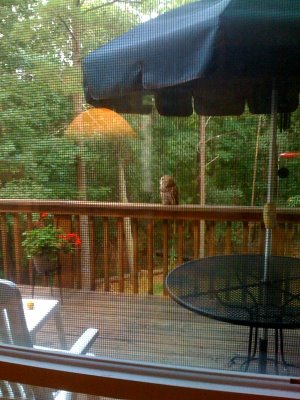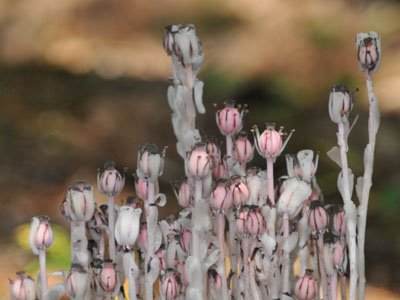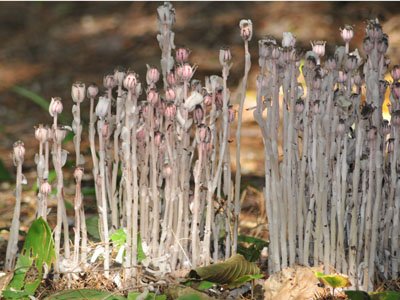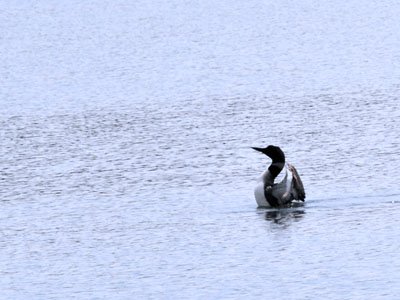We arrived at twilight, visiting a home on the road between Dublin, New Hampshire, and Jaffrey, on the western side of Mount Monadnock. The path to the back door passed along a small clearing surrounded by the tall hardwood trees of a forest that rolled in gentle, blue-green hills as far as I could see, to the sloping sides of the mountain in the distance. Even under a cloudy sky, the view was lovely, but it wasn’t the view that stopped me and held me spellbound for several minutes.
It was the ethereal, fluted songs of Hermit Thrushes, coming from the woods all around and from the waves of forest ahead, several in every direction, as far as I could hear. The forest and the hills rippled with their songs, like dozens of candles lit and flickering in the last light of day. They sang on either side of me, and further out, and further, like echoes, but not echoes, and I stood for many minutes, surrounded in pure, clear music, and feeling as if I had stepped into a dream.
I have always wanted to hear the song of a Hermit Thrush, but had never heard one until now. I could never have imagined how enchanting it could be to hear so many singing at once, and in such a peaceful, quiet setting.
Two Wood Thrushes also were singing, and at first, I thought that’s what I was hearing all around, because their lyrical eee-oh-lay songs are familiar to me. But as I listened, I knew there was something about many of the songs that was different, and guessed that the singers might be Hermit Thrushes. I hadn’t listened to a recording of a Hermit in a long time, so I wasn’t prepared, and I have to admit that I probably will never know for sure, though as well as I can tell and as well as I can remember, what I heard were the twilight songs of Hermit Thrushes.
Listening to recordings later didn’t help much. I listened to several different recordings of Hermit Thrushes, over and over again, but not one of them captured the quality of the songs I had heard. Poets and nature writers have described it, however, much better than my words do. And then I was amazed to find this account in Donald Kroodsma’s The Singing Life of Birds, of a very similar experience in almost the same location:
“Perhaps John Burroughs said it best: ‘Mounting toward the upland again, I pause reverently as the hush and stillness of twilight come upon the woods. It is the sweetest, ripest hour of the day. And as the hermit’s evening hymn goes up from the deep solitude below me, I experience that serene exaltation of sentiment of which music, literature, and religion are but faint types and symbols.’
“It was as if Burroughs had been with us on that late July evening in 1997. . . . Late that afternoon we had climbed Monadnock Mountain in southern New Hampsphire. We then descended the western flank, where we would linger on a rock ledge to prepare our dinner. What we planned was a feast: a gourmet meal shared with each other at sunset, seasoned with hermit thrush songs. In the hush of that July evening, when other birds had stopped singing for the year, first one hermit sang, then another, and another, until the entire mountainside flamed with the glow of the sun and the hermits’ songs.”
(Donald Kroodsma, The Singing Life of Birds, page 255)




